Artful And Architectural – Acanthus ‘Bear’s Breeches’ Pointers From Gardeners

PERENNIALS > ACANTHUS
Reviewed By DAN ORI

Dan has over 27 years’ under his belt caring for plants and gardens. Working as a Horticultural Instructor and Consultant, he draws on a diverse range of experience that includes working as a Head Gardener, Tree Surgeon, Garden Centre Trouble Shooter, and writer of academic papers. Dan has a Level 3 Diploma in Horticulture and is currently a candidate for the RHS’s most prestigious award – The Master of Horticulture.
Contributions From JOE & LAURA CAREY

Joe and Laura Carey are the owners of Carey Garden Design Studio, a Garden Design company that they founded together in 2020. Laura has an Arts degree and Joe trained at the London College of Garden Design. The Talitha Arts Garden designed by their studio was the winner of both the Best All About Plants Garden and a Gold Medal at the Chelsea Flower Show in 2023.
IN THIS GUIDE
ACANTHUS GUIDES
Named for the oversized hairy leaves which adorn its robust upright stems, Acanthus mollis is said to resemble the hirsute hind quarters of a friendly bear.
Indeed, it’s often prized more for its foliage than its flowers, though they too are a sight to behold when in full bloom.
“I love anything architectural, so if I can’t squeeze in a towering tree fern, then I’m likely to try and get some Acanthus mollis into all of my smaller planting designs,” shares Garden Designer Joe Carey.
That’s because the blossoms come with their own hooded leaf bract, which provides a pleasing purple contrast to the pinkish-white petals beneath.
Artfully arranged on the stem, they are irresistible to bees and will enhance the biodiversity of your garden wherever they’re placed.
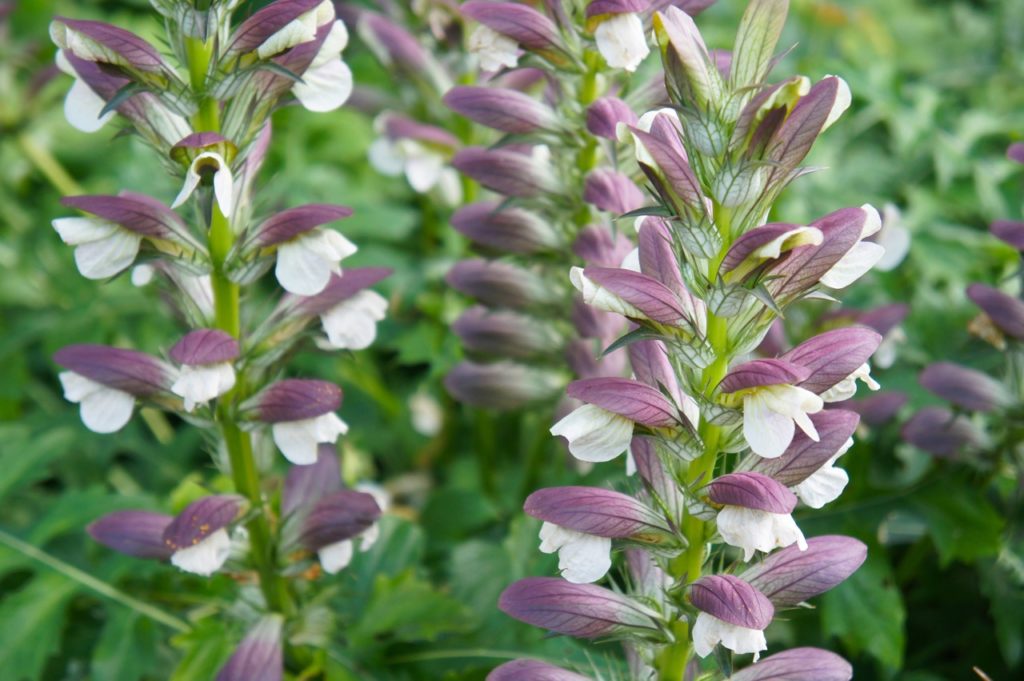
Regardless of the reasons for its popularity, there’s no denying that Bear’s Breeches are a common fixture in bold garden displays across Britain.
They work especially well when given pride of place at the front of a border, or else to bring architectural intrigue to an arrangement.
Overview
| Botanical Name | Acanthus mollis |
| Common Name(s) | Bear’s Breech / Bear’s Breeches |
| Plant Type | Herbaceous Perennial |
| Native Area | Mediterranean |
| Hardiness Rating | H6 |
| Foliage | Evergreen |
| Flowers | Tall spikes populated with white or pink flowers with purple hoods |
| When To Plant | April-May or September-October |
| When To Prune | March or September-October |
Sunlight
Preferred
Full Sun or Partial Shade
Exposure
Exposed or Sheltered
Size
Height
1 – 1.5M
Spread
1 – 1.5M
Bloom Time
Summer
Soil
Preferred
Most fertile soils
Moisture
Well-drained
pH
Any
Acanthus mollis was a favourite cultivar in both Ancient Greece and its Roman counterpart, which is why it features in much art of both time periods.1Minissale, P., Magro, V., & Raimondo, F. (2019). Why did Acanthus mollis, native to West Mediterranean, become a so relevant artistic and symbolic element arising from ancient Greece? Flora Mediterranea, 29, 119–128. https://doi.org/10.7320/flmedit29.119
Most notably, it can be seen in abundance as decorative detailing atop Corinthian columns.2The Editors of Encyclopaedia Britannica. (1998, July 20). Acanthus. Encyclopedia Britannica. Retrieved March 9, 2023, from https://www.britannica.com/art/acanthus-ornamental-motif
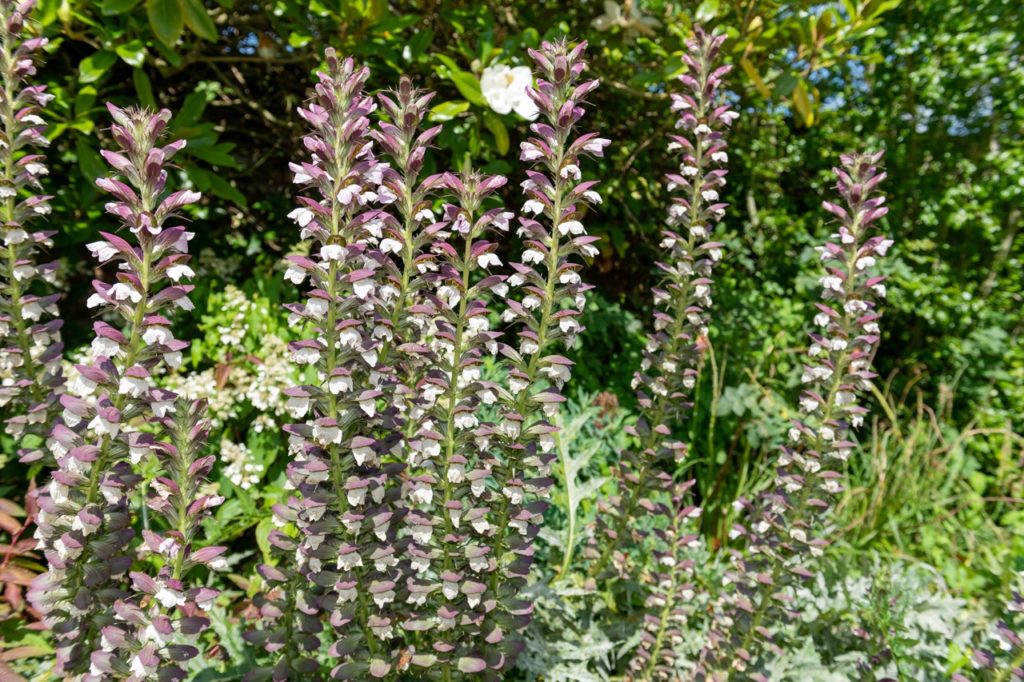
For that reason, using it around your garden will effortlessly create a classical aesthetic for your display.
It’s quite tall and showy, so it works best when it’s the centrepiece of a floral arrangement, or else grouped together in large clumps if you have the space available.
What’s more, it also makes an excellent cut flower.
Common Varieties
Although there are 30 accepted species of A. mollis, a mere handful are commonly grown as garden plants and there isn’t a whole lot in the way of variation between them.3Acanthus L. (n.d.). Kew Royal Botanic Gardens. Retrieved March 9, 2023, from https://powo.science.kew.org/taxon/urn:lsid:ipni.org:names:344-1
Having said that, here are some of the more popular types in the UK:
A. mollis ‘Whitewater’
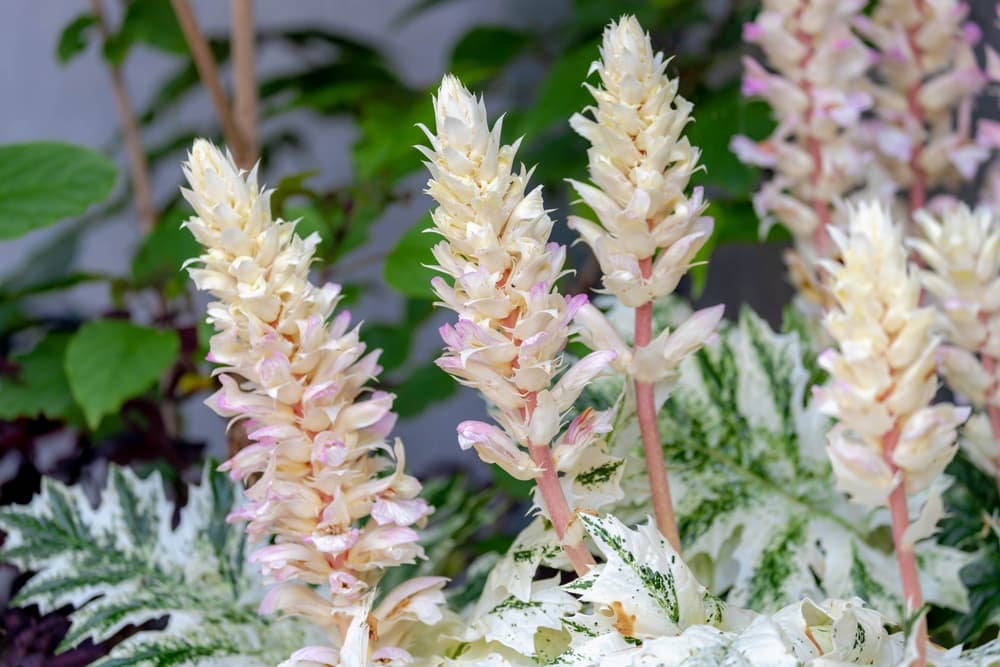
Much like other types of bear’s breeches, ‘Whitewater’ is favoured for its intriguing foliage, striking blossoms and architectural prowess.
However, it differs from its brethren in the white splashes found on its leaves, which are otherwise of deep green.
A. ‘Summer Beauty’
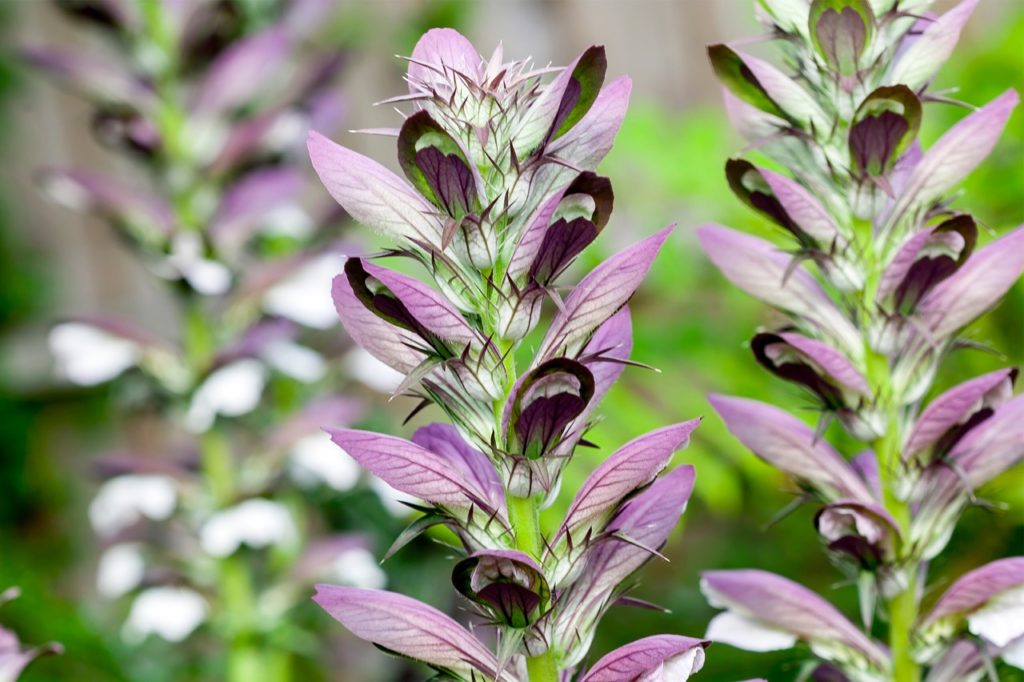
This isn’t a true A. mollis, but rather a hybrid that is tall and imposing at full maturity.
It bears giant, glossy but finely cut leaves that form expansive clumps, while the summer months yield beautiful white flowers in spikes, topped by the trademark purple bract.
A. spinosus
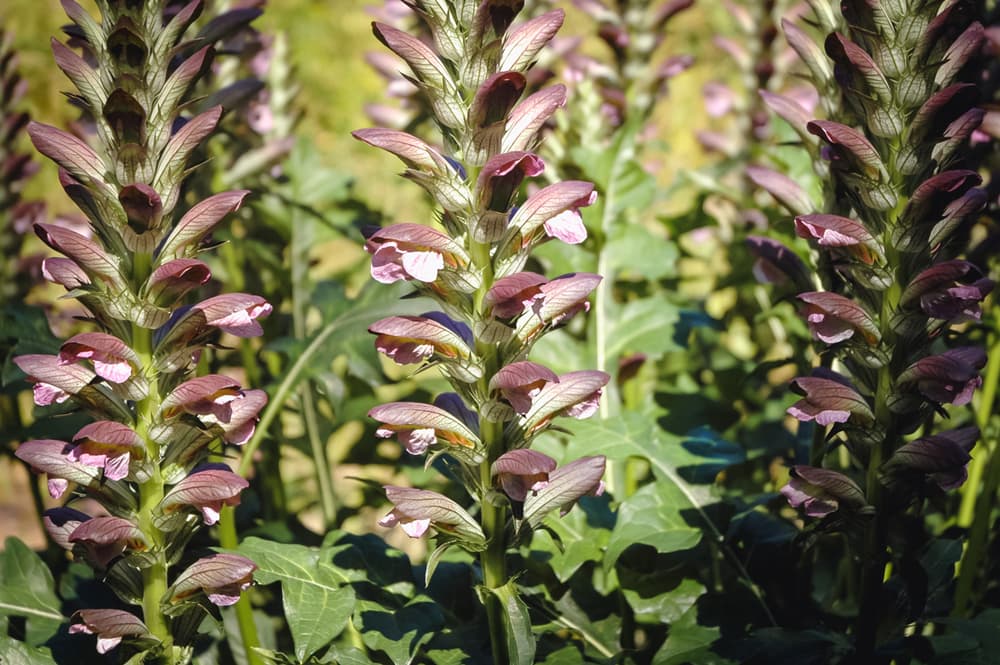
A close relative of Acanthus mollis, A. spinosus has the same classical frame but slight differences in its colourings.
For starters, the leaves are of a more dramatic blue-green hue, while the hood above the white flowers is often of a slightly rustier tone than the standard purple.
How To Grow Bear’s Breeches
Bear’s breeches are most commonly bought from nurseries and garden centres for direct planting into the ground.
They should be planted in spring or autumn to avoid excessive height or frozen terrain.
It’s important to choose the site where you plant bear’s breeches wisely, since it’s very tricky to relocate it after the fact.
Not only is it a sizeable specimen that’s unwieldy to dig up and move, but its roots penetrate deep beneath the earth and can be nearly impossible to eradicate completely.
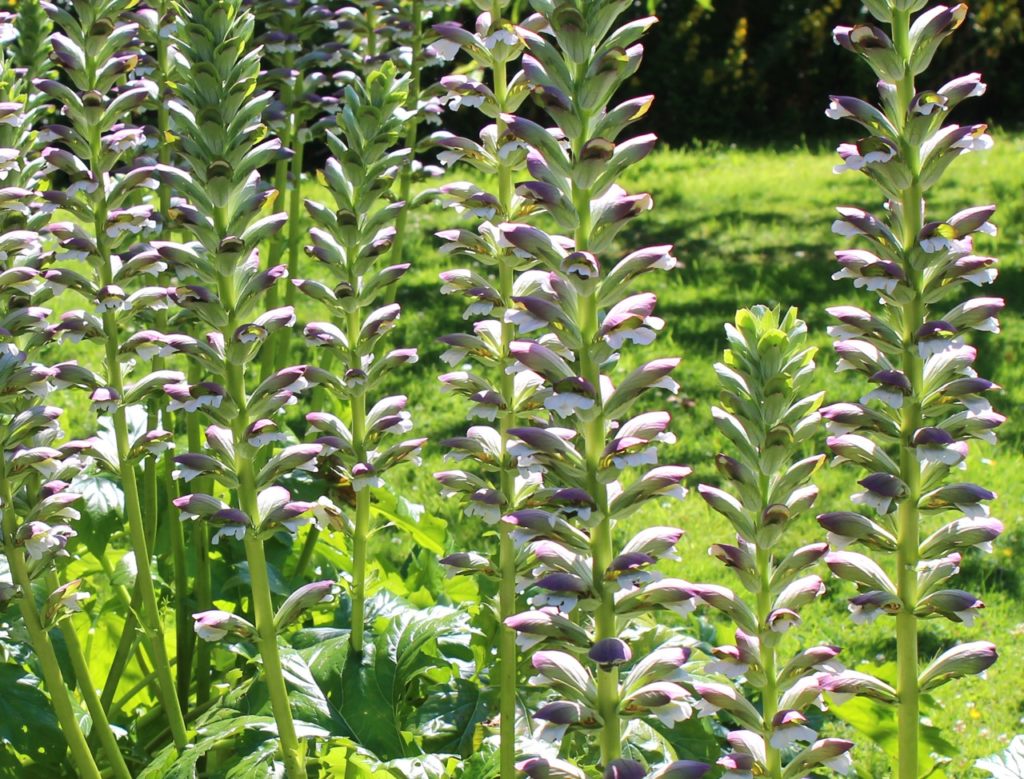
Leave any behind and they’ll develop into new plants in time.
It’s also very possessive of space and will require a diameter of around 50cm on all sides to itself.
It can be quite aggressive in pushing other plants out of the way, too, so many gardeners choose to plant it in bottomless containers to restrict the spread of its roots.
Growing From Seed
It is possible to cultivate bear’s breeches from seed, but they require plenty of time and warmth to germinate and establish themselves.
For that reason, it’s best to begin them indoors and wait until their roots are developed.
Soak the seeds in water for between 24-48 hours before planting to begin the germination process.
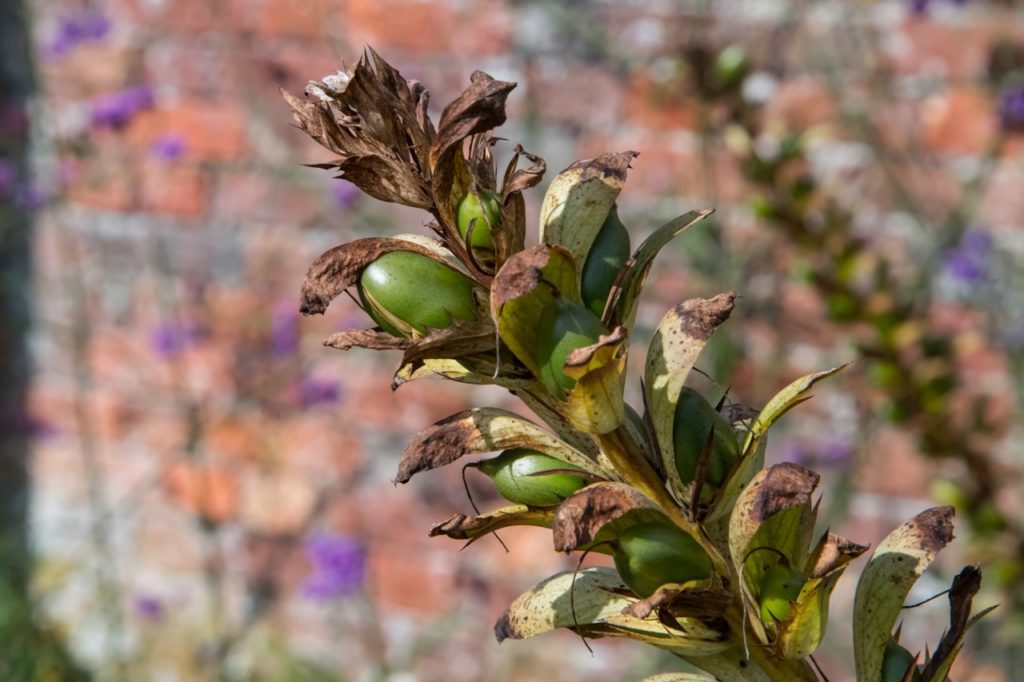
Drain them and plant them immediately in a large pot at 1cm depth, covering them with loose soil and watering thoroughly.
Once the roots have had time to establish, you can move your bear’s breeches outdoors.
Of course, it is possible to plant them directly into the ground (this must be done in spring), but it’s trickier to ensure they germinate in the British climate.
In any case, it will still take several years before they flower, regardless of how they are reared.
Root Cuttings
“You can propagate new plants successfully in autumn or spring from root cuttings or by slicing off an outer section of leaves with roots attached using a sharp spade,” advises Master Horticulturist Dan Ori.
“This is often easier than seed propagation or digging up the plant to divide due to its deep root structure.
“I have found cuttings and divisions are more successful in the spring as this can avoid the cold wet winter conditions and the high potential of powdery mildew or slug/snail attack without being able to put on growth to offset the challenges.
“Growing from seed is worth trying as you will most likely get flower colour variations – I would harvest seeds in the autumn and sow in the spring.”
Where To Grow Acanthus
Soil & Aspect
As mentioned above, Bear’s Breeches work best when they’re grown as the star of the show.
They do best in fertile soil with good drainage qualities and appreciate full sun or part shade.
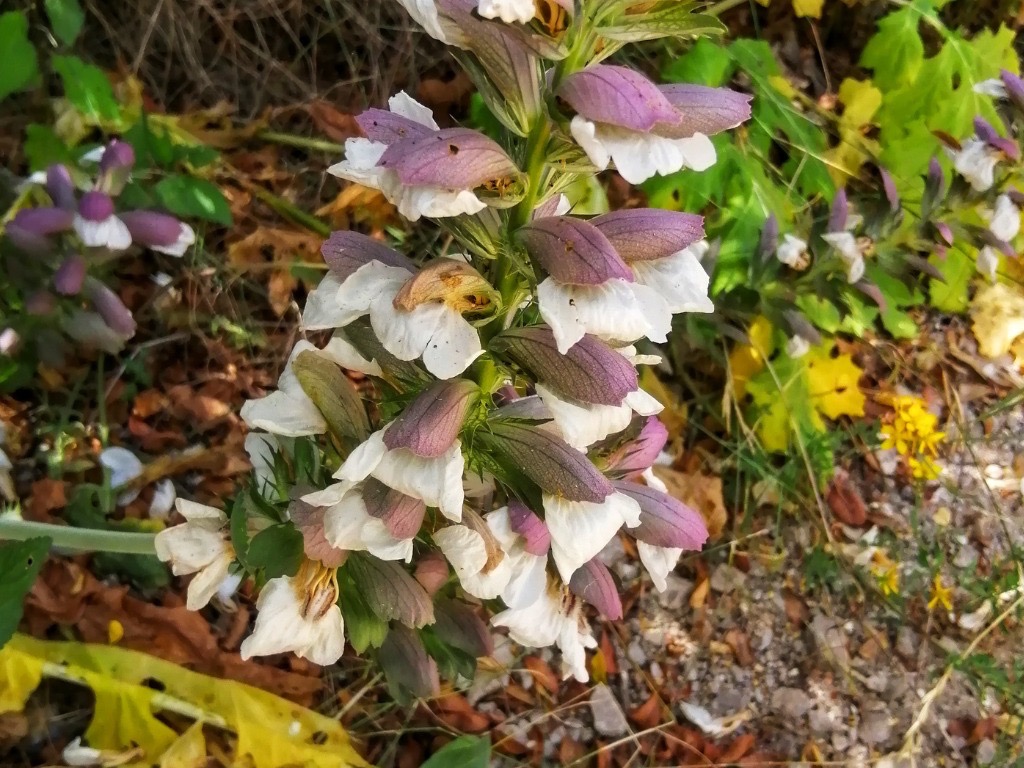
They have excellent drought resistance and it doesn’t matter too much where you plant them in terms of aspect or soil quality, as long as you make sure you’re happy for them to stay there indefinitely.
With that said, “I always avoid planting in wet shade due to the plants’ dislike of the conditions and susceptibility to powdery mildew,” says Dan Ori.
“In my opinion, Acanthus is one of the best plants you can use in a dry sunny herbaceous border.”
Temperature
With RHS hardiness ratings of H6 or more, this plant is more than capable of holding its own against the British winter.
In fact, the colder temperatures in December, January and February are actually what prevents them from becoming invasive in many gardens.
Ongoing Plant Care
As resilient plants, bear’s breeches don’t require too much in the way of ongoing maintenance.
Only minimal upkeep is needed, including the following:
Light
Bear’s breeches appreciate direct sunlight but don’t depend on it for their survival.
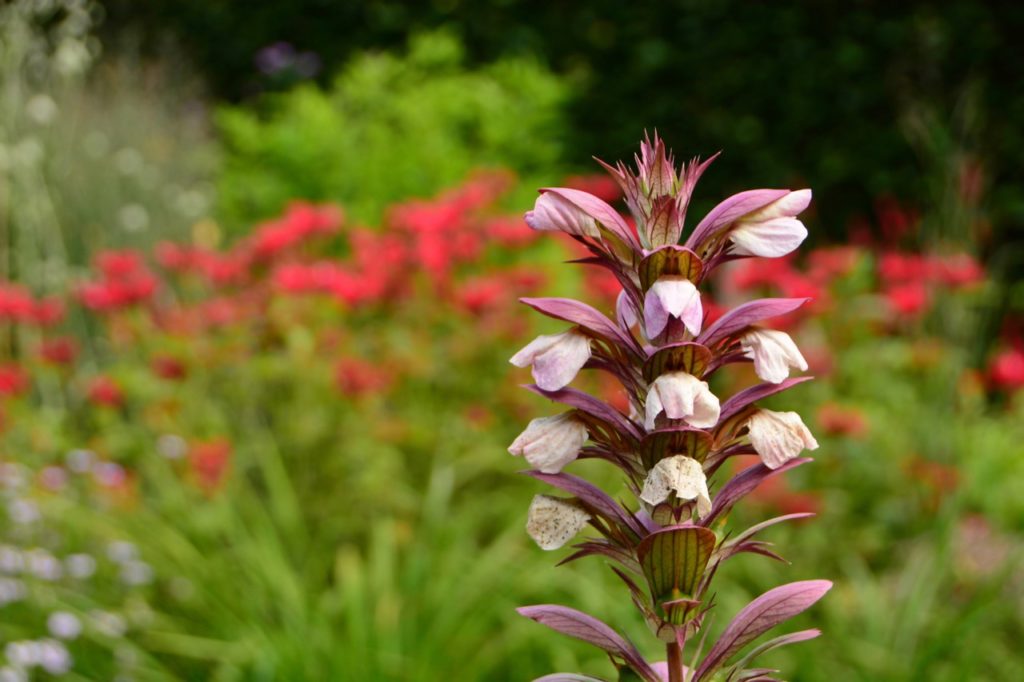
For that reason, they’ll thrive impressively in part shade and even hold their own in full shade, though you might notice that blooms are not as impressive.
Watering
Acanthus is a thirsty plant and demands frequent watering.
If neglected, it may wilt quite dramatically.
Feeding & Fertilising
Aside from enriching the initial hole in which bear’s breeches are planted with rotted manure or another organic fertiliser, they shouldn’t require feeding.
Use a balanced fertiliser only if the plant shows signs of flagging.
Common Problems
Given that the foliage is the main selling point of bear’s breeches, protecting the leaves from slugs, snails and other critters is imperative.
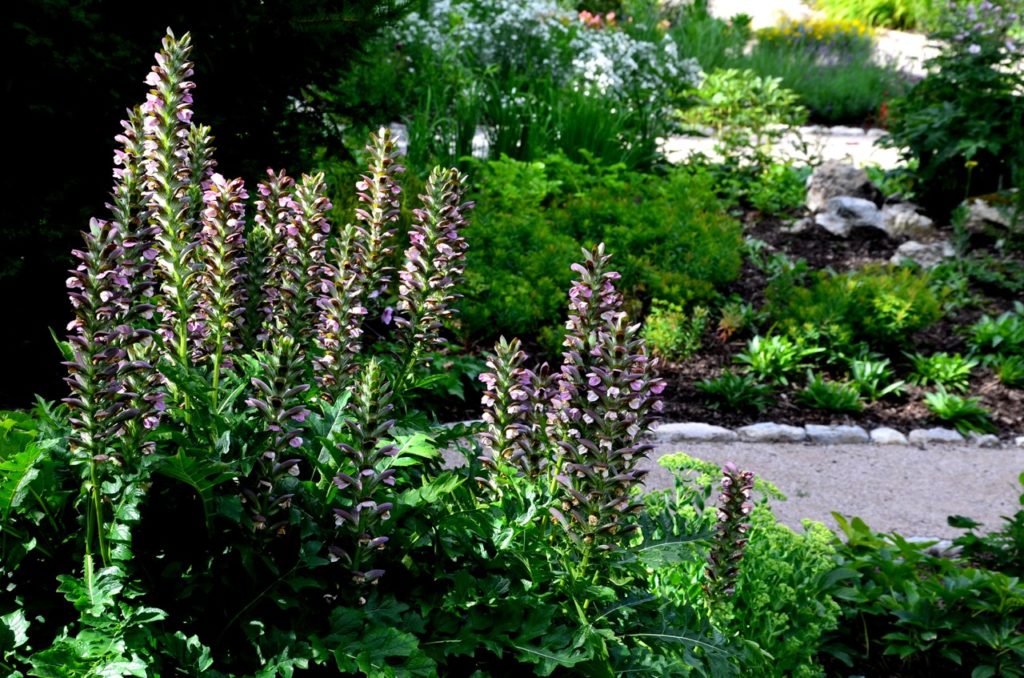
Equally, powdery mildew and bacterial leaf spot and other fungal diseases can be an issue.
Avoid those problems with organic fungicides, salts and proper circulation of air.
Pruning
Stems should be cut back and disposed of after flowering, while foliage should be neatened up in springtime.
Other than that, no pruning is needed unless the clumps start to become congested.
Propagating
Bear’s breeches can easily be propagated by digging the plant up, splitting its roots with a spade and planting cuttings in potting composts.
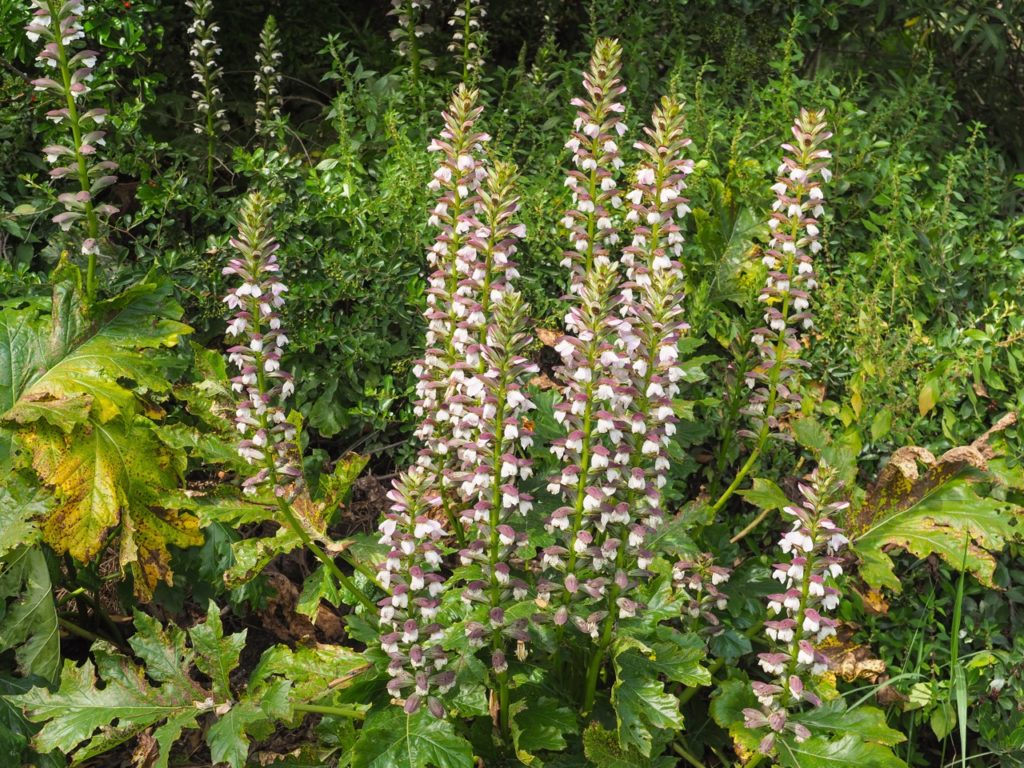
Once established, they can be transplanted elsewhere in the garden.
Just remember, however, that bear’s breeches do spread freely via the use of underground runners, so plant them in multiple positions in your garden at your peril.
Companion Planting
As alluded, bear’s britches are ostentatious plants which might detract from the splendour of others growing in the garden.
For that reason, you might wish to make them a standalone centrepiece, or else pair them with shrubs, bushes or hedges that aren’t as showy.
That being said, they can form part of a striking display alongside other bold and bright perennials.
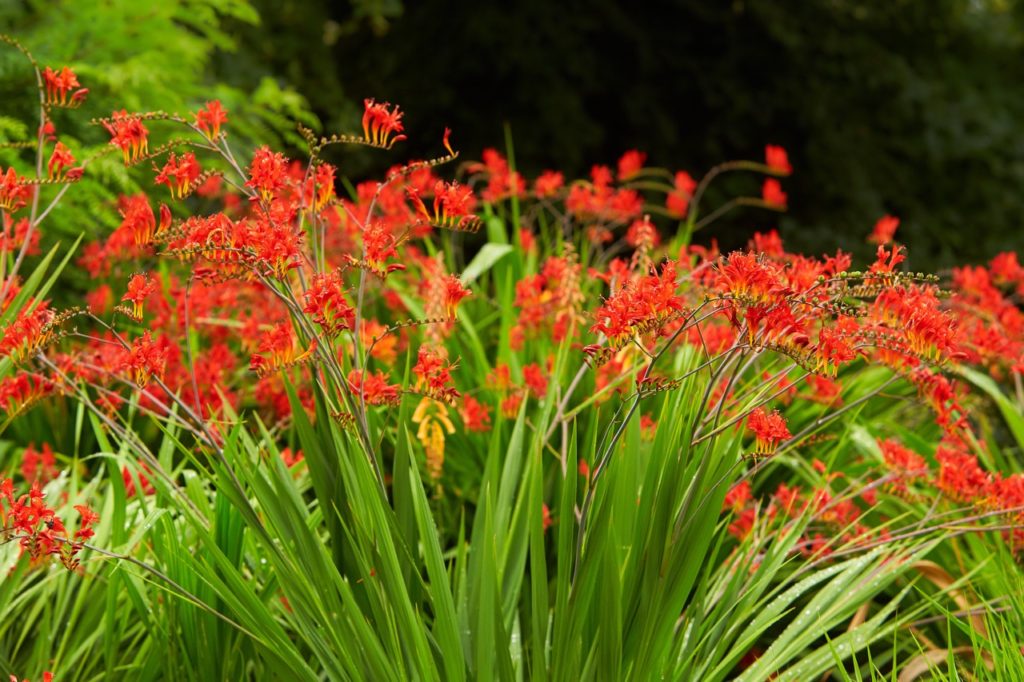
Airy options like crocosmia and gaura can create an audacious partnership with bear’s breeches that’s guaranteed to turn heads.
References
- 1Minissale, P., Magro, V., & Raimondo, F. (2019). Why did Acanthus mollis, native to West Mediterranean, become a so relevant artistic and symbolic element arising from ancient Greece? Flora Mediterranea, 29, 119–128. https://doi.org/10.7320/flmedit29.119
- 2The Editors of Encyclopaedia Britannica. (1998, July 20). Acanthus. Encyclopedia Britannica. Retrieved March 9, 2023, from https://www.britannica.com/art/acanthus-ornamental-motif
- 3Acanthus L. (n.d.). Kew Royal Botanic Gardens. Retrieved March 9, 2023, from https://powo.science.kew.org/taxon/urn:lsid:ipni.org:names:344-1

